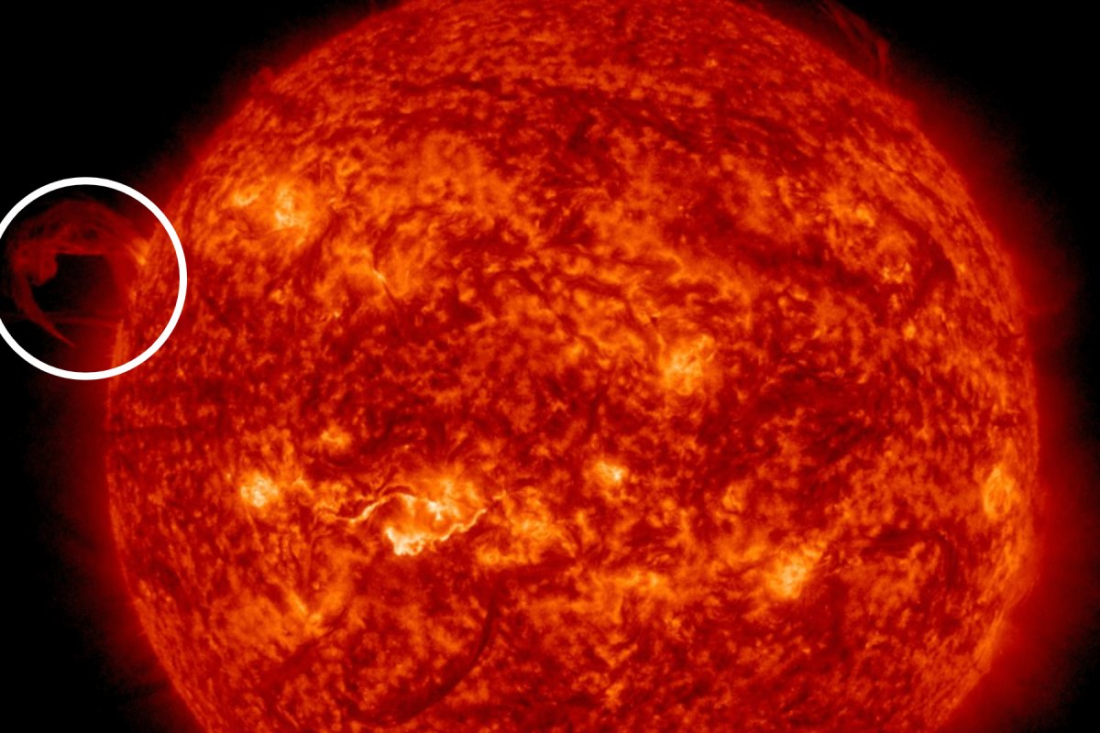
In a dramatic turn of events, a powerful coronal mass ejection (CME) has been observed erupting from the Sun, and its impact is set to reach Earth today. The National Oceanic and Atmospheric Administration Space Weather Prediction Center (SWPC) has issued a geomagnetic storm watch, warning of potential disruptions to power grids, satellites, and GPS systems. Additionally, sky gazers might witness auroras further south than usual.
The CME, a colossal release of solar plasma, lifted off from the Sun on Sunday, prompting the SWPC to predict a moderate solar storm on Earth spanning Monday and Tuesday. Geomagnetic storms are categorized on a scale from G1 (minor) to G5 (extreme), and the current event has been classified as a G2 or G3. While the SWPC reassures the general public that there’s no need for major concern, there is a possibility of disturbances to power grids, radio transmissions, and satellite orbits.
A G3 storm, such as the one anticipated, could also bring about the stunning spectacle of the aurora borealis, commonly known as the Northern Lights. States in the northern and upper Midwest regions, from New York to Idaho, may witness this colorful phenomenon. Interestingly, during G5 storms, the Northern Lights have even been observed as far south as Florida and southern Texas.
Geomagnetic storms, according to the SWPC, result from significant disturbances in Earth’s atmosphere caused by the exchange of energy from solar wind. The most intense storms are associated with CMEs, where billions of tons of solar plasma reach Earth. These storms can take as little as 18 hours or several days to impact our planet.
This solar eruption comes at a time when the sun is nearing its solar maximum, the peak of its 11-year cycle marked by explosive activity. In November 2023, the SWPC predicted that this solar maximum would be more intense, lasting longer and resulting in more sunspots, solar flares, and CMEs. As a positive consequence, the Northern Lights are expected to grace the skies more frequently, providing sky watchers with an increased opportunity to witness this celestial spectacle.










